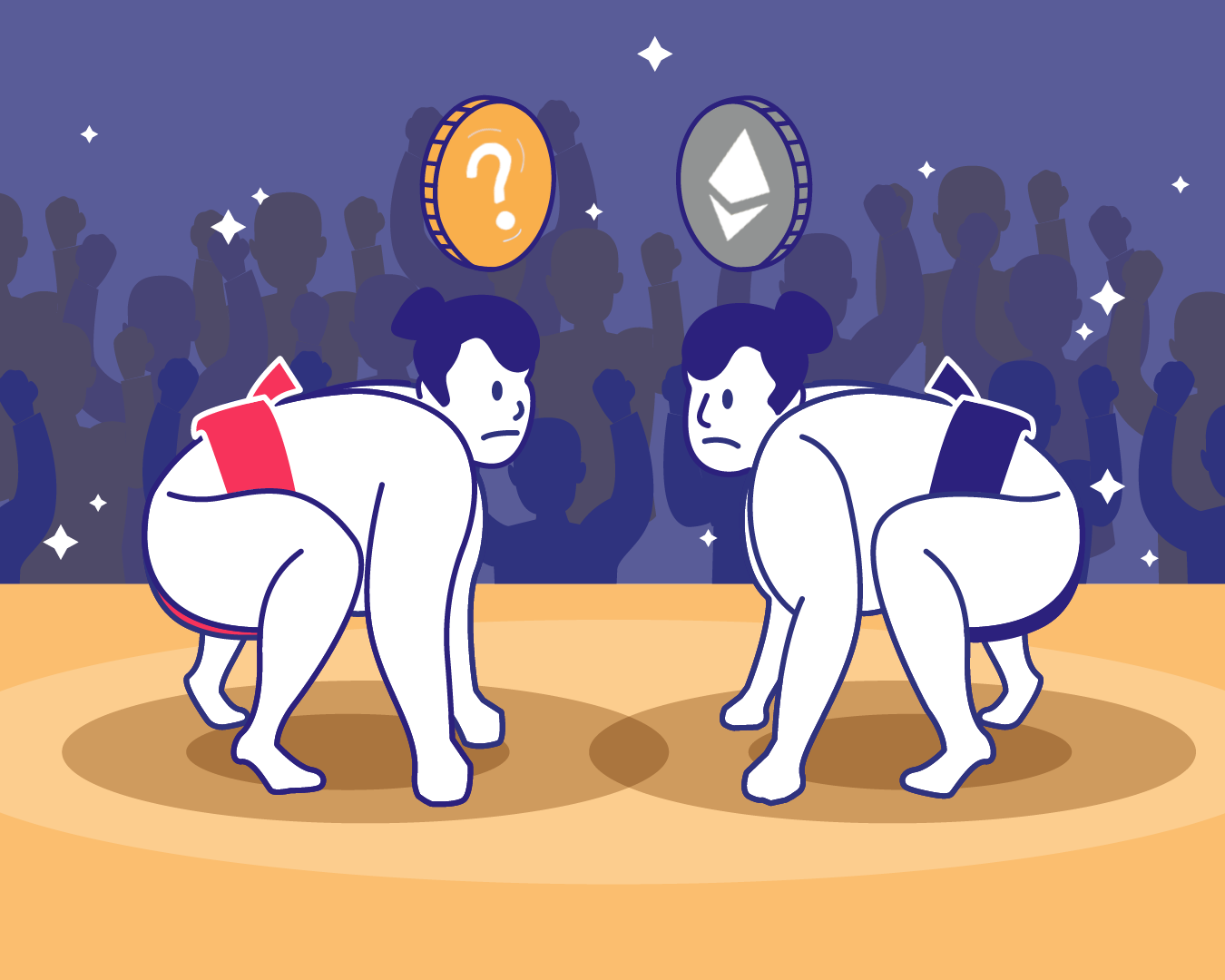Dominating the crypto market with a 20% share, Ethereum has firmly cemented itself as a necessary cog in the blockchain machine. That being said, the network still faces plenty of challenges, ones that others are looking to improve on. When it comes to blockchain development, there are plenty of players in the game. Here we explore the biggest Ethereum rivals that are playing a part in driving innovation in the crypto sphere.
The Rival Factor
All these networks provide a platform on which developers can build their own decentralized apps (dapps) and smart contracts. This provides the resources for developers of all fields to create, build and launch projects that harness blockchain technology, without having to build it from scratch.
Currently, Ethereum poses various limitations, most notably in terms of latency, high gas fees, scalability issues as well as a relatively disliked programming language. These platforms have all attempted to resolve at least one of these issues, if not all of them. What the blockchain ecosystem needs is a platform that provides an indisputable balance between decentralization, security and scalability. Let’s explore the next generation of Ethereum rivals attempting to do just that.
Cardano (ADA)
Cardano was launched in 2017 by one of the co-founders of Ethereum. Charles Hoskinson designed the platform to improve on the shortcomings of the first (Bitcoin) and second (Ethereum) generation networks.
As a proof-of-stake (PoS) network, Cardano offers a more eco-friendly approach, ticking the sustainability box, while also addressing scalability and interoperability issues. The platform stands out from the rest in that it uses research-driven and evidence-based methods for its development, incorporating strong input on an academic level. The platform has a number of ties with universities around the world and is a pioneer in encouraging blockchain development in education.
While catering to a wide range of industries, the platform is also very focused on making the world a better place. Intended to be for the “changemakers, innovators and visionaries”, Cardano is encouraging all projects built on the platform to bring about positive global change.
Solana (SOL)
After releasing the whitepaper outlining the project in February 2018, Solana was officially launched in March 2020. The platform has become a much talked about newcomer after experiencing wild price gains and impressively climbing the ranks of top cryptocurrencies based on market cap.
The project sets itself apart by ticking the boxes of scalability and speed. The project is capable of processing 50,000 transactions per second (TPS), compared to Ethereum’s 30 TPS (ETH 2.0 claims that with sharding the upgraded network will be able to handle 100,000 TPS). To further drive this point, that’s 2.5 times faster than Visa, a major credit card company, and 10,000 faster than Bitcoin.
Another unique element to the platform is its consensus mechanisms, which incorporate both proof-of-stake and proof-of-history, the latter being an innovative protocol designed by Solana’s co-founder, Anatoly Yakovenko.
Solana has quickly established itself in the top 10 cryptocurrencies and remains a favourite on “new altcoins worth investing in” lists around the world.
Harmony (ONE)
Like the name might suggest, Harmony was built to “harmonize blockchains”. How exactly? Much like Ethereum and the other platforms listed here, Harmony allows for the creation of dapps and smart contracts. Harmony, however, does this while also incorporating random state sharding, which allows for faster block creation time (we’re talking seconds).
This infrastructure has proven to significantly reduce processing speeds and validations on the network. Alongside the sharding consensus, Harmony also utilizes the effective proof-of-stake (EPoS) mechanism. According to its website, “Harmony is your open platform for assets, collectables, identity, governance. Our secure bridges offer cross-chain asset transfers with Ethereum, Binance and 3 other chains.”
While still in its infancy, Harmony has still managed to impress the masses and could prove to be one of the biggest Ethereum rivals in years to come.
Polkadot (DOT)
Known for spearheading the way in bringing interoperability to the blockchain ecosystem, Polkadot allows for the cross-chain transfer of data. With blockchains able to communicate and transfer data, a whole new world of functionality has been created.
While Polkadot provides a blockchain platform on which developers can build dapps and smart contracts, these dapps are created in separate parachains, which connect to the network’s core relay chain. Each developer/community is responsible for their parachain, creating a fully decentralized and private web of blockchain applications able to exchange data with one another.
Due to the nature of the parachain infrastructure, the network is able to process 1,000 transactions per second (while Bitcoin can handle 7 and Ethereum 30) while still maintaining high levels of security.
Just a year and a half since launching, DOT has seen its value increase 275% this year alone. A hot commodity and on the radar of top traders, Polkadot has the potential to outshine Ethereum in the coming months.
Ethereum Remains King
While these platforms are all offering “improved” versions of blockchain development, Ethereum still remains king. With the largest pool of developers to date and a pending upgrade moving to a more scalable PoS model, Ethereum is still an impressive and well-loved network. Time will tell is any of these biggest Ethereum rivals will take the network on.
________________________________________________________
Oobit Technologies Pte, 50 Raffles Place #37-00 Singapore Land Tower, Singapore (048623). is a company registered in Singapore (no:201716443G), that has been approved as Appointed Representative of Oobit Technologies OÜ, Harju maakond, Tallinn, Lasnamäe linnaosa, Väike-Paala tn 2, 11415, (no: 14852617 ). Which is authorized and regulated by the FIU (no: FVR001421 and FRK001304).

